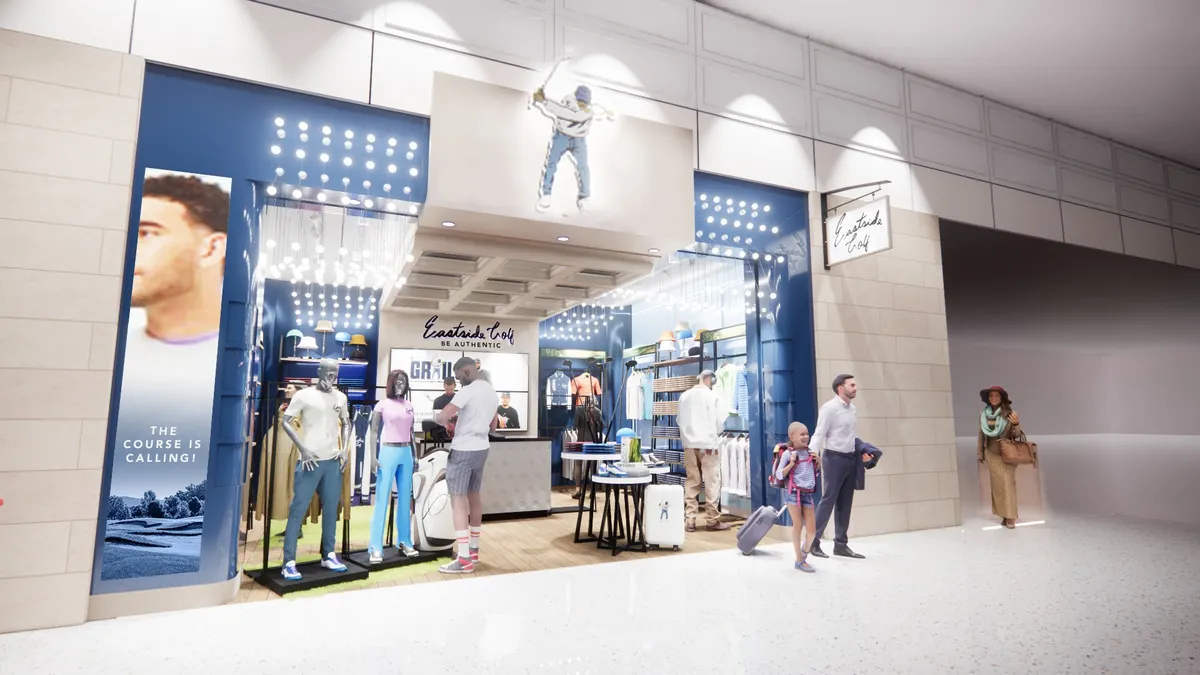Earnings reports and retail sales figures this year reveal that consumers remain cautious about spending, continuing a two-year trend. Companies like dollar stores and off-price retailers have profited from that, while department stores and others striving to sell full-price discretionary goods have been challenged.
The situation has led many retailers toward markdowns, sales events and the development of private labels. But research shows that in these inflationary times, shoppers aren’t focused solely on price.
“There's a million articles out there that 75% of consumers are downgrading, but there's a flip side of that,” Matt Pavich, senior director of strategy & innovation at Revionics, who specializes in pricing and retail strategy, said by video call. “People are looking for value.”
Here’s what that means:
Consumers care about quality
Inflation hits retailers, too, but it’s often a mistake to lower the quality of a product in order to maintain its selling price, according to Deidre Popovich, a professor of marketing and supply chain management at Texas Tech University. In fact, research shows that as prices rise many shoppers actually expect to get more.
This also means that loyal consumers may be motivated to consider switching if the quality of their favorite brand or item seems to have declined, she said by phone.
“Product packages are getting smaller, and people are getting less for their money. And consumers are aware of this — they're not blind to the fact that they're paying the same price for less,” she said. “Some firms are trying to cut quality in that way, but I think others are aware that, as consumers are spending more money, they're expecting higher quality. There's a price-quality heuristic, which basically means a rule of thumb: As price goes up, we expect quality to go up.”
“People are making really informed choices. They're not always going to the bottom."

Matt Pavich
Senior Director of Retail Innovation, Revionics
Consumers, especially younger ones, are paying attention to the quality of goods and services when it comes to spending their money, Popovich also said.
“Gen Z and millennials in particular are more focused on product reviews and influencers and getting information from online social media sources about whether this purchase would be worth it,” she said. “They would be very focused on, ‘Has somebody else bought this product? What did they think about it? Did they think it was worth the money?’ And that's going to really drive their purchase decisions, more so than older consumers.”
Retailers like Abercrombie & Fitch with strong merchandising are likely to win over such customers, according to GlobalData Managing Director Neil Saunders.
“The small things Abercrombie & Fitch has changed, like better buttons, softer fabrics and little design embellishments, all make its proposition more defensible in a crowded and competitive marketplace,” he said by email. “They also represent added value which gives people a reason to spend a bit more on the products rather than trade down to cheaper alternatives — of which there are many.”
Even trading down can mean a search for a higher quality, according to Pavich. For example, Starbucks last week said a “cautious consumer environment” contributed to worse-than-expected Q3 sales and traffic. But some of their customers may be switching to premium coffee and expensive brewing equipment for use at home in order to save money in the long run, Pavich said.
“People are making really informed choices. They're not always going to the bottom,” he said. “We've seen some great growth at the discounters, but I do think if you're offering a really good value proposition, you're seeing those retailers do well as well.”
What is ‘quality’?
For some, quality may found in some combination of meaningful details, durability, design or brand name. For others, it could be that employees are paid well or manufacturing is sustainable. Still others may prize convenience, excellent customer service or liberal return policies.
“It varies by customer and by retail segment. But I do think value is the major story right now. And the goal is to offer value to consumers even more so than price,” Pavich said. “There are certain categories — like you really can't afford to wear cheap shoes, because they'll fall apart, right? You're better off paying more to get a pair that will last longer. That's definitely happening in the market.”
A report from consulting firm AlixPartners and the Footwear Distributors and Retailers of America, released Tuesday, backs that up. This back-to-school season, 67% of parents looking to buy shoes for their children are prioritizing quality and comfort compared to 42% who are prioritizing price, according to that research.
“We’re seeing a shift in how parents view footwear products and prices,” said Bryan Eshelman, partner and managing director at AlixPartners. “While inflation has been an obsession among shoppers around cost — recently raising the importance of discounts to drive traffic — the deal alone isn’t what’s converting sales of kids’ shoes today. Consumers, in fact, are more focused on value for their spend.”
For higher-end companies like Tapestry, attributes like “quality of craftsmanship and innovation” have helped boost average selling prices, according to a June research note from TD Cowen analysts led by Oliver Chen.
“While discretionary spending is under pressure, shoppers are drawn to newness and strong brands,” he said.
Retailers in the DTC space or those developing private labels are successful when they take quality concerns into account, per that report, which is based in part on discussions with several retail executives.
Warby Parker offers “stylish lenses for significantly less without sacrificing on the shopping experience,” for example, Chen said. And Macy’s is taking not just price but also fit and style into consideration as it overhauls its private labels, per the note.
“Multiple CEOs emphasized how the consumer perceives value and isn't always shopping for the lowest price,” he said.
The calculations for retailers
Determining pricing is a multilayered consideration in an environment where consumers are conscious of both price and quality — and define quality in often idiosyncratic ways.
“There's always an art and science. At a very basic level, you as a retailer have to understand your business and how your consumers shop,” Pavich said.
Customers tend to expect higher prices on brand names and organic ingredients, and lower prices on private labels or volume purchases. Yet there are many permutations, as when private labels are made with premium materials. Demographics, geographies and points in time are also often factors in consumer preferences and expectations, according to Revionics data. A retailer may be wise to cut the price of a particular item if a competitor down the road is having a sale, for example.
Loyalty programs can help retailers glean data about what their customers are interested in and how they respond to marketing and promotions.
“It's really about knowing the market, knowing what's competitive for that market, knowing why it's competitive,” Pavich said. “Consumers vote with their wallet, and then you have a data point and you understand what is worth it to them. Is it that slightly higher-quality product, is that organic product, is that local product, is it a women-owned business, is it gluten-free? Whatever is making them care more about that product.”






















